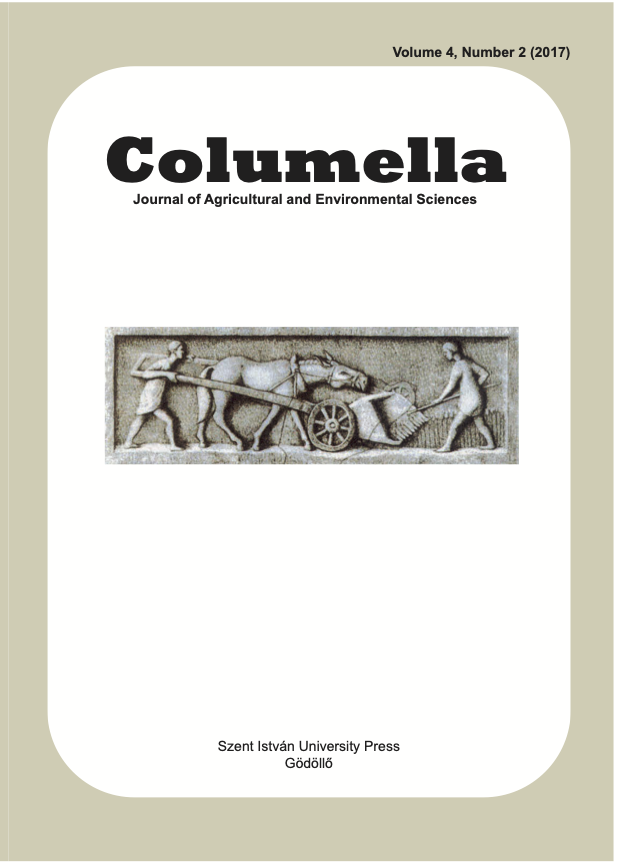Response of soybean and barley to Fertdolomite application on acid soil
DOI:
https://doi.org/10.18380/SZIE.COLUM.2017.4.2.7Keywords:
soybean, barley, Fertdolomite, grain yield, climate changeAbstract
The stationary field experiment with the application of granulated dolomite (MgCO3 x CaCO3) enriched with nitrogen, phosphorus and potassium (Fertdolomite: 24.0 % CaO + 16.0 % MgO + 3.0 % N + 2.5 % P2O5 + 3.0 % K2O) in rates 0, 5, 10, 20, 30 and 40 t ha-1 on standard fertilization was started on 13th November 2007 on the acid soil (pH in 1n KCl: 3.90). The trial was conducted by randomized block design in four replicates (basic plot 40 m2). Standard fertilization of trial was applied in the next years for crops in rotation. In this study the response of soybean (2010) and winter barley (2012/2013) was shown. The average grain yield of soybean was 4830 kg ha-1 with variation among the treatments ranging from 4341 to 5361 kg ha-1. At the rates 10 t ha-1 and 20 t ha-1 soybean yields were significant increased for 8% and 16%, respectively and additionally by 6% at the highest rate of fertolomite. Fertdolomite had a moderate positive effect on protein contents in grain, while oil content was independent on the treatments. The average grain yield of barley was quite low (3630 kg ha-1), mainly due to low ears density (average 493 per m2) which was affected by oversupplies of precipitation in winter period under less permeable soil conditions. Extreme variations of precipitation regime are in connection with climatic change. Due to the application of 10 and 20 t ha-1 of Fertdolomite, yields of barley were significantly increased by 20% and 34%,respectively. However, the rates of 40 t ha-1 showed a non-significant difference of the barley yield as compared to the control level. The ear densities were significantly increased by application ≥ 10 t ha-1 Fertdolomite rates. Improvement of soil status by liming, adequate fertilization and similar managements contribute to the alleviation of detrimental effects of soil limitations and recent climate change on field crop yields.
Downloads
Published
Issue
Section
License
Copyright (c) 2017 Vlado Kovacevic, Manda Antunovic, Ivana Varga, Dario Iljkic, Jurica Jovic

This work is licensed under a Creative Commons Attribution-NonCommercial-NoDerivatives 4.0 International License.






